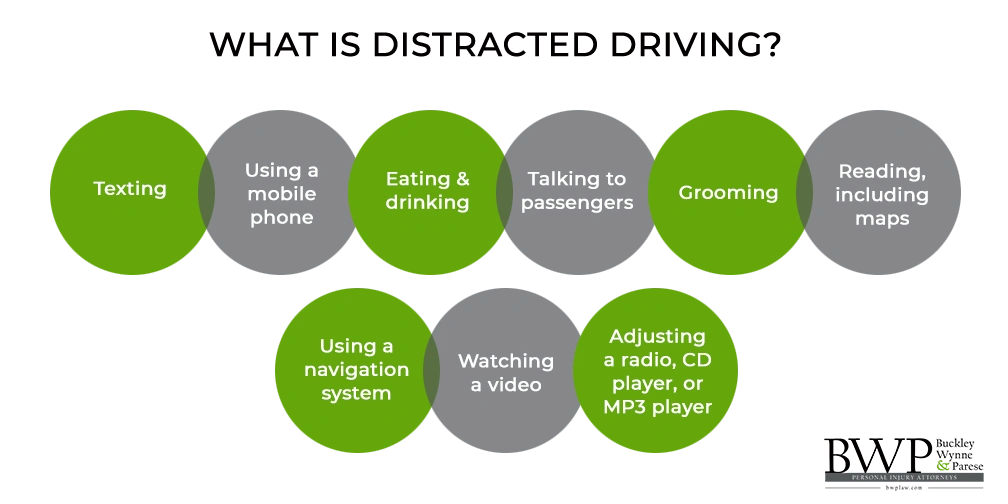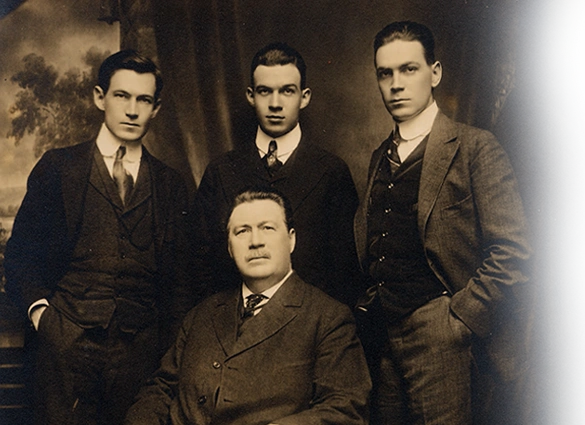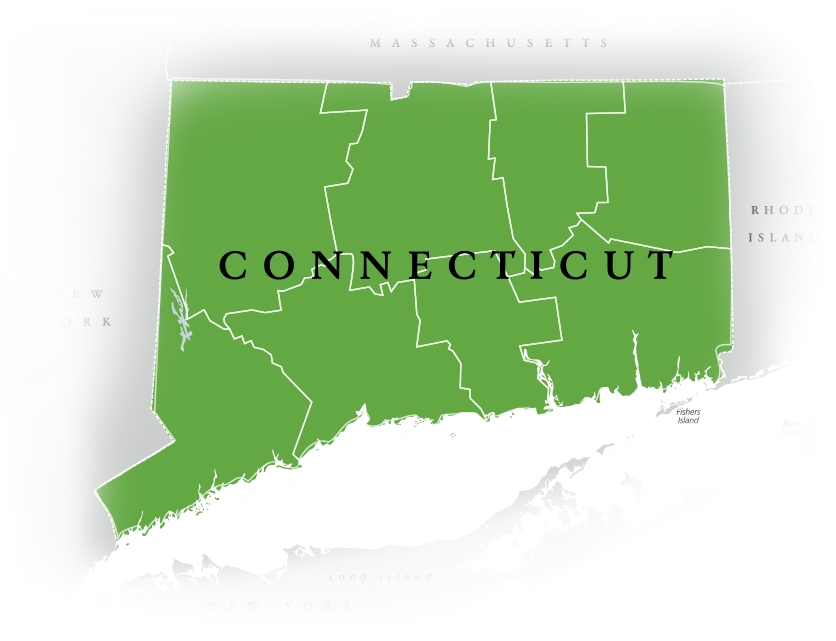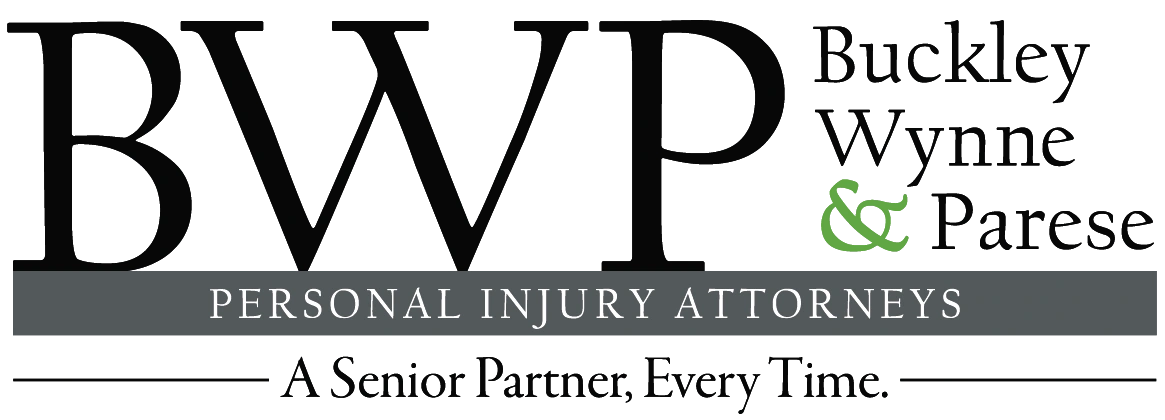Distracted Driving Accidents Lawyer in Monroe, CT
If you have been injured in Monroe of a distracted driving accident, involving a distracted driver or texting and driving wreck, you may be entitled to financial compensation, for both damages to your vehicle and the injuries you sustained.
Table of Contents
ToggleFacts of the Distracted Driving Epidemic:


- 9 people in the U.S. are killed each day as a result of crashes involving a distracted driver, according to the Department of Motor Vehicles.
- Each day, 11 teens die as a result of texting and driving.
- Texting while driving is 6 times more likely to cause an accident than driving under the influence of alcohol is.
- Cell phone use is the second largest cause of distracted driving. 14% of distracted driving related deaths comes from cell phone use (as of 2015).
- Over 80% of drivers admit to blatantly hazardous behavior while driving, such as changing clothes, steering with a foot, painting nails, or even shaving.
Source: >TeenSafe.com
Distracted Driving Laws in the State of Connecticut
Handheld Devices: No motorist may use a handheld mobile device regardless of whether said motorist is stopped at a traffic light. In the case of an emergency, there is an exception to this law should one need to contact emergency personnel.
Texting and Driving: Under Connecticut law, no operator may engage in texting while driving. This includes reading, writing and/or responding to such text messages.
Novice Driver: Unlike adult motor vehicle operators, drivers under the age of 18 are not permitted to use a hands-free component to talk on the phone.
Distracted Driving Penalties in the State of Connecticut
First or Second Time Offenders: $150 or $300 fine
Third Time Offenders: $500 fine
Fatalities: One may face charges of negligent homicide with a motor vehicle, misconduct with a motor vehicle, or second-degree manslaughter. Penalties may include fines between $1,000 and $10,000 and jail time ranging from 6 months to 10 years.
Source: Connecticut Department of Motor Vehicles
Where Are The Most Distracted Drivers In Monroe, CT? Travelers Survey Pinpoints Dangerous Roads
On September 25, 2018, the Hartford Courant published this article. The Travelers Institute and UConn commissioned a survey of 500 Connecticut residents and gathered the following research:
How dangerous is your city?
Distracted Driving Crashes by City:
- New Haven: 1,392 crashes
- Hartford: 1,055 crashes
- Bridgeport: 899 crashes
- Waterbury: 821 crashes
- Meriden: 642 crashes

How dangerous are your roads?
The most crashes occurred on:
- I-95 North and South – along the eastern shoreline
- I-84 East and West – Hartford & Waterbury
- I-91 North – at the 691 interchange in Meriden
- Route 1 South – along the entire southern coast
- Route 9 North – Middletown
- Route 2 West – between Norwich and North Stonington
Source: Hartford Courant
BWP is a proud sponsor of End Distracted Driving and The Casey Feldman Foundation

Casey Feldman (April 4, 1988-July 17, 2009)
EndDD’s mission: to save lives from distracted driving through advocacy, education and action
EndDD.org is a project of the Casey Feldman Memorial Foundation, which was founded in 2009 by Casey’s parents, Joel Feldman and Dianne Anderson. Twenty-one year- old Casey Feldman was struck and killed by a distracted driver while crossing a street in the crosswalk.

Attorney John F. Buckley pictured giving an End Distracted Driving presentation at Sacred Heart Academy in Hamden, Connecticut.
Contact BWP Today – We Are Your Monroe Distracted Driving Accident Attorneys
If you, a family member or friend have suffered an injury or death in an accident due to another person’s distracted driving in Monroe, call us today at 1-800-445-2278.
Monroe Practice Areas
Case Results
$1,300,000
Motor Vehicle Settlement
Multiple back surgeries caused by significant head-on motor vehicle collision.
Read more
$1,500,000
Police Liability Settlement
Traumatic brain injury sustained during the course of a police pursuit.
Read more
$1,800,000
Liquor Liability Judgment
Multiple facial fractures, scarring, traumatic brain injury as a result of negligence by an establishment serving alcohol.
Read more
$1,950,000
Motor Vehicle Settlement
Head-on Crash with orthopedic injuries, including lumbar back surgery.
Read more
$2,100,000
Premise Liability Settlement
Serious lower extremity injuries with complications caused at a defective commercial property.
Read more
$2,850,000
Motor Vehicle Settlement
Victim sustained multiple fractures with permanent disability.
Read more
$3,000,000
Motor Vehicle Settlement
Traumatic brain injury as a result of head-on motor vehicle collision.
Read more
$3,200,000
Serious Injury Settlement
Rollover motor vehicle collision resulting in serious injuries with government employee at-fault.
Read more
$4,500,000
Motor Vehicle Settlement
Car crash with complex physical injures and psychiatric losses.
Read more
$4,600,000
Wrongful Death Settlement
Fatal automobile accident resulting from police negligence.
Read more
$4,850,000
Motor Vehicle Settlement
Rear-end motor vehicle crash with complex physical and psychiatric losses.
Read more
$6,400,000
Serious Injury Verdict
Pole vaulter suffered spinal cord injury with paralysis as a result of improper landing during track and field event.
Read more
$7,500,000
Racketeering and Fraud Judgment
Significant financial losses caused by racketeering and fraud.
Read more
$8,500,000
Serious Injury Settlement
Serious brain injury with paraplegia suffered during commercial inspection.
Read more
$9,000,000
Serious Injury Settlement
Spinal cord injury with paraplegia as a result of a construction incident.
Read more
Testimonials
Quick and consistent.
"John Buckley was quick and consistent in relaying information to me regarding litigation, and he and his staff were always very supportive of any requests I made. John’s experience and strategic expertise made the difference…
Richard
Couldn’t have been happier with the services I received!
"I contacted BWP in June 2019, after I was hit by a drunk driver. John Wynne was my attorney. I couldn’t have been happier with the services I received. Everyone I dealt with was very…
Valerie
Thank you for all your help and support
"Thank you for all your help and support. Jim and I really appreciate it. Thank you for the baby basket it was very thoughtful and generous."
Jimmy & Justine
Thank you John for your support
"Thank you John Parese for your support in these two years was really appreciated!"
M. Daly & Family
I thank you from the bottom of my heart!
"I want to thank you so very much for all your help especially when I was a nervous wreck over some things."
Robin
Thanks for helping me with the MV accident!
"My family and I will always be grateful to you and your awesome staff for assisting me."
Lenona B.
Your kindness is deeply appreciated!
"Thank you for being so supportive through all of this!"
Cynthia S. & Family
Thank you for all that you did for us!
"We just wanted you to know how much it meant to us, thanks again for everything!"
Sally D.
Thank you for you generous donation!
"Thank you for you generous donation! Without your help, Kid-U-Not, would not be able to help living organ donors in Connecticut!"
Sally M.
I'd refer John Wynne to any of my CT friends!
"Thank you so much for all of your hard work involving the case with my brother and I. We appreciate all of your communication and best of luck with your practice."
Jake F.
I really appreciate your support throughout the case!
"I wanted to take a minute and thank you for all your hard work! Best of luck with all of your other cases!"
Emily W.
We appreciate the support!
"Thank you very much for being a corporate sponsor, your support is greatly appreciated!"
BHS Hockey Booster Club
These guys take care of the working man!
"Thank you very much for taking care of the working man and being so caring and obtaining the agreement that you did with all parties involved."
John G.
You have helped me beyond words!
"Thank you again for taking the time out of your busy day to come up to New Britain court with me to help me with my MV case. I am forever grateful, thanks again!"
Melissa D.
Thanks for serving as my attorney!
"Joe and I both appreciate that you believed in me!"
Dawn K.
Settled faster than I ever thought it would
"Never have I ever come in contact with an attorney like John. My son’s case did not drag on for years. It settled faster than I ever thought it would. It was a great settlement…
Rosemarie F.
John went above and beyond!
"I sought out John Buckley to represent my interests when the likelihood of a satisfactory resolution seemed impossible. He is calm, personable and extremely professional, explaining each step of the process with integrity and transparency.…
Joe S.
Your kindness and patience are without compare.
"John-Thank you so very much for the time and attention you put into Mom’s case. Your kindness and patience are without compare."
Frank
Highly recommended!!!
"A great law firm, highly recommended!!!"
Matthew P.
These guys are the best!
"They are a group of topnotch attorneys."
Angelo D.
The best firm in the world!
"The best firm in the world, do not bother looking any further!"
Ron B.
Excellent group of lawyers!
"John Buckley handled a case for me and not once was he not available when I called with concerns or questions. If I ever again need an attorney I would not hesitate to call them.…
Lillian D.
You’ll never top these guys.
"Looking for the best lawyers around to represent you? You just found them. Don’t bother looking anywhere else. You’ll never top these guys."
Ben F.
Attorney Parese came highly recommended!
"Attorney Parese came highly recommended as someone with both a legal expertise and a personal touch. In the end, both turned out to be exactly the case. John was a regular at our kitchen table…
Raymond
John Buckley is honest and kind-hearted
"John Buckley is such a sweet soul and the best Attorney on the planet! He's honest, kind-hearted, and he keeps it real 100% of the time, no matter what!"
Cynthia Rachel Spivey
They give back in their communities!
"I can highly recommend them for personal injury law. They are not only great attorneys but they give back in their communities!"
Sally McVey McCartin
Thank you for helping my mom!
"I recommend Attorney Parese to all he did an awesome job for my dear mom when a drunk driver injured her."
Leo B.
Thank you so much!
"John Buckley is such a sweet soul and the best darn Attorney on the planet! He’s honest, kind hearted and did I mention he’s the best darn attorney?"
Cynthia
I would recommend this law firm to anyone!
"Attorney John Wynne helped with the personal injury case and we won because of him! I would recommend this law firm to anyone!"
Theo
Thank you so much for all the support you give to MADD CT
"Thank you so much for all the support you give to MADD CT. It is an honor to have you part of us. Words could never express how much it means to us!"
MADD CT Staff
Experience was fabulous
"I have dealt with John Buckley for over 2 years from a car accident I was in, my experience was FABULOUS! John handled everything, he and his staff were so helpful and made the overall…
Sissy Wilson
I'd recommend this firm.
"The staff was attentive, including Mr. Wynne - I'd recommend this firm."
Elizabeth DeWolf
Highly recommend this firm!
"John Buckley handled my case and John Parese fought for me in court. These guys are honest and fair, 10/10 would recommend!"
John P.
Highly recommend
"John Buckley recently handled a case for me. Amazing, attentive service from all staff. Attention to detail and old fashioned good values is what makes them the right choice when you need help."
Cindy Proto Walker
The outcome was great
"Atty John Parese was amazing from beginning to end of our case. He and his teamed stayed on top of everything and kept us informed along the way. The outcome was great and I highly…
Bethany and Kyle P.
I felt comfortable through the whole process
"John Buckley is great. I felt comfortable through the whole process and he educated me along the way! I highly recommend John and his group."
Scott T.
Would not go to anyone else
"We have worked with the firm of Buckley Wynne and Parese over the past several years, exclusively with Atty. John Parese. We feel that Atty. Parese is our "go-to" attorney for whatever we need, whether…
The Gagliardi Family
Thank you for expertise, you and your staff are amazing.
"I would highly recommend John Buckley and BWP. John explained every aspect of my situation and how to approach resolution, He made sure I was kept informed with frequent meetings/phone calls and was always available…
Cynthia W.
We recommend Mr. Parese without reservation.
"John Parese represented my family in an automobile accident case. Not only did he impeccably represent them, his calm and empathetic demeanor offered emotional succor to myself and those I care about most. My parents…
Michael D.
I highly recommend John Parese and his team!
"I was injured in an auto accident. BWP fought for me to get the best settlement due to my injuries. I can't thank them enough, best attorneys in the state! I highly recommend John Parese…
April Marie F.
Great law office; very professional
"They are a great law office. Very professional and nice guys. Their office staff is excellent as well."
David A.
I can’t thank you enough for your hard work.
"John I can’t thank you and your assistant Aubrey enough for your hard work. I will be SURE to recommend this law firm to my friends and family."
Lisa Ann
Best attorney in the game!
"Best attorney in the game! But it all starts with him being one of the best humans out there. If anyone is looking for someone they can not only trust but relate to. All without…
Bob S.
Thank you so much for your hard work
"It was really great working with John Parese. He answered all my questions, made me feel comfortable, and helped me to understand the process. Each step of the way, he kept me posted and updated.…
Angel A.
The best!
"John Buckley is wonderful! He goes the extra mile for you as a client. He is caring and understanding yet remains very professional with you as a client. He explains everything in a way so…
Robin S.
I highly recommend this firm
"John Buckley handled my case. I have had many contacts with various attorney's, over 40 years in my job and by far John Buckley is one of the most professional lawyers I have ever met.…
Carol F.
Buckley made sure I was comfortable and knew what was coming next
"I had a very pleasant experience dealing with Buckley, Wynne & Parese Personal Injury Attorneys. I had the pleasure of working with Mr. John Buckley on a personal matter. I was often times very nervous…
Shannon L.
Prompt and beyond knowledgeable
"Following an accident resulting in injuries and dealing with the headache that is insurance companies, I contacted John Parese. That was probably the best decision I could have made! John was prompt and beyond knowledgeable.…
Garrett W.
Great people
"I had the best service ever. Great people and great company. This firm is the best!"
Viktor K.
Open line of communication was impressive
"I had the pleasure of working with attorney John Parese from BWP. John was awesome, his attention to detail and his open line of communication was impressive. I didn’t feel like he was my attorney,…
Dan S.
Thanks to Attorney Parese we were able to reach a positive outcome
"On December 13, 2016 I was involved in an automobile accident (not my fault) at which time my car was totaled and I was injured. Fortunately, occupants of the other vehicle were not hurt. While…
Barbara P.
A settlement more than I could have hoped for
"Pure professionalism and care in moments of need. I was worried they would impact my day to day life negatively, I was so wrong. I was not called or bothered unless it really mattered: BWP…
Meredith R.
I would definitely recommend this firm
"I was fortunately referred to this practice by a coworker. I was never so pleased dealing with such wonderful people through a bad situation. They continually kept me up to date with the status of…
Genevieve A.
Reassuring, comforting and helped me understand the process
"Professionalism at its highest. John Buckley and his staff truly made the entire process after my car-accident seamless. John was in contact when needed and always available if I needed a question answered. He was…
Zara L.
Attention to detail, kind hearts, and fearless defense
"John Parese made it very easy to feel comfortable dealing with a lawsuit. We felt we were in excellent hands and even his support staff went above and beyond to help us with our suit.…
Gretchen B.
They are the best in the business and come highly recommended!
"Buckley, Wynne & Parese was a pleasure to deal with and did an excellent job handling my claim. They are the best in the business and come highly recommended!"
Ken C.
Attorney Parese and his staff are exceptional.
"Attorney Parese and his staff are exceptional. They are informative, professional, courteous, and conscientious. They answered any and all questions that I had, and listened with patience. I am grateful for all of their hard…
Jamie J.
Expertise, Professionalism, and Dedication to Helping Others
"I highly recommend John Parese to anyone in need of a personal injury attorney. Not only did he go above and beyond to help me, but his down-to-earth and friendly manner put me at ease…
Carrie S.
Many thanks to John Buckley
"Many thanks to John Buckley and his staff for all their attention and professionalism."
Antonella
They're winners
"WINNERS!!! I really want everyone to know what winners attorney John Parese and staff are. Attorney Parese and his staff are extremely professional, knowledgeable, and caring. Always prepared regardless of what may come up while…
Cherlene
Always felt involved and kept in the loop
"I can’t say enough good things about BWP Law! Although I worked more closely with John P., the entire firm is amazing. They made me feel comfortable and helped me understand all the ins and…
Ava R.
From the moment I met Attorney Buckley, he put me at ease
"From the moment I met Attorney Buckley, he put me at ease. At first, I was hesitant to contact an attorney after the car crash, yet after deciding to work with Buckley, Wynne & Parese,…
Nicole C.
Parese listened carefully
"John Parese listened carefully, we discussed options, he gave me his expert advice on where he thought we would end up and he went to work to attain the damages I was due. I received…
Joseph S.
No one better!
"John (Buckley), No one better to stand by my side through this!"
Diann
John Parese is the best!
"Attorney Parese just finished a motor vehicle case for me. At the time of my accident, I was a 32 year vet of a police department and the accident forced me into retirement. I am…
John
It is clear that helping people is important to you
"This is a very heartfelt thank you for all you did to help resolve my case. The accident and what followed was confusing and a bit overwhelming. However, the best thing to come of it…
Carrie
Knowledge, trust, & accessibility
"John Buckley exhibits knowledge, trust, accessibility, instills faith and I felt he always had my best interest at heart. Thank you John Buckley and team for easing my mind during a difficult time. I highly…
Diane M.
5 star all the way!
"Upon my first meeting to discuss my case, I knew that I found the right place to handle it!! Attorney John Parese was fantastic, definitely 5 star all the way! Everything regarding the process and…
JB K.
These are smart people who understand the system
"John Parese and his firm helped me through a very tough time in my life. I hit my head in a car collision and suffered through migraines, visual distortions and I had memory difficulties that…
Michael G.
Honesty, respect, and diligence
"John Parese did a wonderful job years ago for our family! Honesty, respect, and diligence. We will never forget your dedication, John!"
Mary C.
Mr. Parese was a pleasure to work with!
"Mr. Parese handled my case well. He was kind and patient throughout the entire process and kept me updated frequently. I had full confidence in his ability to handle my case - which he did…
Alicia Z.
What a seamless, painless and rewarding experience
"Dear John (Parese), What a seamless, painless and rewarding experience it was working with you on my claim! Thank you for your patience, and a great big "Thanks" to Aubrey for her help and support."
Felicia P.
Compassionate, Understanding, & Trustworthy
"Compassionate, Understanding, Trustworthy, why can I not say about John Parese. Since my accident he stood right by me. Calming my nerves, easing my mind that all was going to be OK. guess what? He…
Jeannine K.
Mr. Buckley’s professionalism and empathy were ever present
"We do I begin to express our gratitude. My family and I are most thankful for the kind, caring and compassion shown to us by Attorney John Buckley. Mr. Buckley’s professionalism and empathy were ever…
Joanne S. & Claire P.
Tremendous from start to finish
"I had the best experience working with John and his legal team. They were a tremendous help from start to finish. I’ve never been in a situation like this before and they were clear in…
Elena M.
Extremely thoughtful and always available!
"John was amazing to work with as well as any of the paralegals that helped out in my case. Extremely thoughtful and always available if I needed to talk. Could not recommend using this firm…
Paul B.
Friendly, professional and VERY responsive!
" Attorney John Buckley was highly recommended to me by quite a few people and upon my first meeting to discuss my case, I knew immediately that I was in good hands. He took his…
Jamie B.
Respectful, extremely knowledgeable, & understanding
"Recently engaged BWP concerning a motor vehicle accident. From the initial consult, and continuing throughout the entire process, John Parese and the entire staff were respectful, extremely knowledgeable, understanding of my goals and supportive to…
Robert T.
Thorough, caring, and patient.
"I don't have the words to describe how wonderful John Parese was to work with. He took my family and I under his wing during a difficult time. He was by our side for 3…
The Yanellis
Kind, patient, honest and extremely knowledgeable.
"John Parese is an excellent attorney who provided care that was needed at an extremely difficult and a long period of time. He and his team are very dedicated and gave professional guidance in various…
Xueping Q.
Wonderful staff.
"Wonderful staff. They gave the impression that they really care for their clients. I will call on them again if I need in the future."
Kelly B.
Two thumbs up!
"John Parese is an amazing attorney! He constantly checked in with me to make sure I was feeling better after my accident and gave me updates on where we were in the process. I never…
Kristen R.
Excellent attorney who always fights to protect his clients.
"John has assisted me with several issues. He is an excellent attorney who always fights to protect his clients. I was able to recover medically knowing John was fully handling the insurance and issues with…
Danielle Q.
Very professional and his team is wonderful!
"Attorney Parese helped me with my car accident. He is very professional and his team is wonderful. I highly recommend his services for car accidents!!! Thank you John."
Walter P.
Handled my case with diligence, respect and care.
"John Buckley and John Parese handled my case with diligence, respect and care. They explained everything from start to finish, and helped me when I needed it. I will refer this firm to anyone I…
John S.
Always looks out for my best interests.
"Attorney Buckley has been excellent in handling my case. He's extremely knowledgeable and always looks out for my best interests, providing valuable guidance. His years of experience allow him to get straight to the point…
Rosina M.
Would recommend to anyone in need.
"Absolute pleasure to work with everybody at BWP. Not only did they throughly explain everything but walked me through every step of the process. Would recommend them to anyone in need. "
Kevin A.
Made my entire experience less stressful.
"Working with Attorney John Buckley and his staff was a wonderful experience. Attorney Buckley is a kind and caring person who made my entire experience less stressful. I felt assured that my interest was first…
Gladys V.
Professional, timely and knowledgeable.
"Attorney John Parese , along with his staff, are top notch. Not only are they professional, timely and knowledgeable, they are very polite and respectful. I would highly recommend this law firm. Thank you to…
Lisa Ann F.
I go straight to John Parese.
"I have been using BW&P for at least 10 years and I can't say enough good things about them. Any time I need a lawyer, I go straight to John Parese."
John L.
Competent, honorable, knowledgeable, compassionate.
"They are the best! Competent, honorable, knowledgeable, compassionate."
Roxanne D.
I highly recommend BWP for your legal needs!
"Working with John Parese and the whole BWP team was great. They helped me navigate an insurance settlement over the course of 2 years and made everything clear and simple. Communication was quick and helpful,…
Steve L.
Thank you to all at BWP!
"Attorney Parese was a great help and guided me through this process the entire time. I felt very confident in his guidance and will definitely refer anyone to him and his firm and will have…
Samuel M.
No one needs to go through it alone with a team like this around!
"It started with a call on Good Friday and within an hour a call back from both Mr.Buckley and Mr. Parese. Both making sure I was alright and then assuring me that I would get…
Katie N.
John and his team are outstanding!
"John Parese has represented my family over the course of 15+ years. John is a great person and a diligent, responsive and meticulous attorney. He has always handled our cases from start to finish, no…
Angela W. of Guilford
John and his team actually became like family.
"In the darkest of times during my case Attorney John Parese led me to a bright side, so patient and understanding with my thoughts and concerns. He always remained fearless, going above and beyond the…
Maryanne P.
Thank you again to all at BWP!
"Attorney Parese was a great help and guided me through this process the entire time. I felt very confident in his guidance and definitely refer anyone to him and his firm and will have no…
Samuel of New Haven
Communication was quick and helpful.
"Working with John Parese and the whole BWP team was great. They helped me navigate an insurance settlement over the course of 2 years and made everything clear and simple. Communication was quick and helpful,…
Stephen of Guilford
Highly satisfied with my experience.
"Highly satisfied with my experience with Buckley Wynne & Parese. From initial visit at which time comprehensive information was provided to ongoing status reports from their staff. Attorney Parese was attentive to my concerns and…
Peter C.
Always looking out for the client.
"Excellent job handling our accident case. Always looking out for the client. Very personable and very knowledgeable. Pleasure having him represent us. "
Richard K.
Professional, understanding, and accommodating.
"I worked with Mr. Buckley and he was very professional, understanding, and accommodating. When I was injured and unable to travel, Mr. Buckley came to me for our first meeting. He is knowledgeable and very…
Daniel H.
Great knowledge and compassion.
"Excellent service with great knowledge and compassion for the client! I highly recommend BWPLAW! "
Cathy L.
Knowledgeable & professional
"Very knowledgeable, did the research, showed empathy and professionalism."
Pam H.
John was wonderful to work with.
"After my accident, I chose John Buckley as my lawyer. Throughout the whole process, John was wonderful to work with. He was so calm, patient and showed utmost concern for myself and my family. If…
Sally M.
Knowledgeable on the current laws in Connecticut.
"John Buckley communicated in very professional manner. always called back when message left. knowledgeable on the current laws in Connecticut. it was a pleasure to work with you. will use Buckley law firm in the…
Paul G. of Branford
I had full trust in Attorney Buckley and knew that he had my best interest at heart.
"I have worked with Attorney Buckley and his team twice and both times everyone has been wonderful. You feel as though the team really cares and is there to help you. If you reach out…
Nicole M.
Knowledgeable, professional, and empathetic.
"I had the pleasure of working with John Buckley after I was involved in a car accident. I needed legal representation to help me navigate the insurance claim process and ensure that I received fair…
Tanisha L.
Goes the extra mile for his clients.
"I highly recommend Attorney Parese as he took on my automobile accident. He was very professional and a top-notch Attorney who goes the extra mile for his clients. Attorney Parese and his staff kept me…
Ashlee J.
Skillful and experienced.
"I have had the pleasure of working with John Wynne for years over different legal scenarios . He is always professional, on task and listens with empathy and understanding. He is a very skillful and…
Amy K.
Always willing to help.
"Great firm with reputable lawyers and great staff always willing to help. "
Zoe D.
Always had our health and well-being in focus.
"Every detail was covered after my car accident and each person within the firm made my son and I feel like a priority each time we visited the office. John was top notch, professional and…
Philip P.
A profound work ethic.
"In my experience working with John Parese of the law firm Buckley, Wynne and Parese positively impacted my life after a motor vehicle accident. John has experience, a profound work ethic, and guided me through…
Maryanne R.
Polite, patient and well informed.
"I was involved in a rear end collision resulting in the total loss of my Chevy Silverado, loss of wages and personal injuries. Attorney John Parese came highly recommended from a long time friend and…
James B.
Professional, knowledgeable & always on top of things.
"I would like to thank the firm of Buckley Wynne & Parese, especially, John Wynne who represented me. I couldn't give a higher recommendation for everything he did for me. John was very professional, knowledgeable…
Anthony D.
Best lawyer in New Haven.
"The best lawyer in New Haven. Reach out to John Buckley he’ll take good care of you."
Carmen G.
They listened and got the job done.
"John and his staff where great. They listened and got the job done. Thanks much."
Pamela E.
Incredible attorneys.
"Incredible attorneys."
Todd F.
I will recommend Buckley, Wynne & Parese to anyone.
"I would always come back for legal assistance. I will recommend Buckley, Wynne & Parese to anyone."
Belinda E.
Spectacular to work with.
"This firm was spectacular to work with - they took great care of me and ensured I was fairly represented."
Abbie T.
Working with the Buckley, Wynne and Parese firm was a pleasure.
"My husband and I really appreciate the compassion and understanding that was shown by John. He is a great listener and shows that he truly cares. John's staff was very responsive to our calls and…
Carol I.
I can highly recommend Mr. John Parese of Buckley Wynne & Parese.
"Mr. Parese accepted me as a client and handled everything related to my case, so I could concentrate through the months of doctor visits, physical therapy and psychotherapy and get better. He was very professional,…
Pero B.
I highly recommend Attorney Buckley!
I highly recommend Attorney Buckley! He is the utmost professional, hardworking, and truly cares about his clients. I trust him wholeheartedly and will be contacting him in the future if I am ever in need…
Chelsea P.
I would recommend them to anyone in need of an attorney.
On February 1st 2023 a driver ran a red light at a four way intersection. I was 3 quarters through my green light. Needless to say, My car was totaled. I had a sprained neck…
Cynthia B.
Professional, genuine, caring, and very knowledgeable.
I cannot say enough good things about Attorney John Parese. He is professional, genuine, caring, and very knowledgeable. He always took the time to listen and answer any questions I had no matter how trivial…
Melissa S.
Amazing experience working with this firm.
I had an amazing experience working with this firm on my case. They took care of all my worries. I will definitely use Attorney Parese again in the future if I ever need help again!
Whitney

Serving All of Connecticut
Free Evaluation 24/7
We understand the stress of dealing with an injury. Our team is here to provide compassionate support and effective legal representation, statewide.
Request Your Confidential & Free Case Review
Fields Marked With An ”*” Are Required
Office Location
Stamford Office
263 Tresser Boulevard
9th Floor
Stamford, CT 06901
Phone 800-445-2278
© Copyright 2025 Buckley Wynne & Parese. All Rights Reserved.

